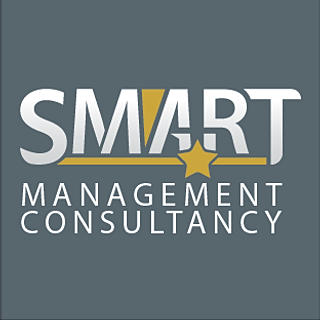Root Cause Analysis in Action: Turning Healthcare Incidents into Sustainable Improvement
- Smart Management Consultancy
- Aug 8
- 3 min read

What if Every Incident Was a Hidden Opportunity?
In every healthcare facility, incidents happen. A patient receives the wrong medication. A specimen is mislabeled. A surgical instrument is left behind. The natural instinct? Fix the mistake and move on. But what if we told you that each incident is a door to powerful, lasting improvement?This is the promise of Root Cause Analysis (RCA) not just a compliance tool, but a strategic weapon for transforming failures into safeguards. At SMART Management Consultancy, we’ve seen how RCA, when done right, can dramatically reduce risks, boost compliance, and create a culture of accountability.
This blog is your detailed roadmap for applying RCA effectively across your healthcare facility.
What Is Root Cause Analysis (RCA)?
RCA is a structured, systematic method used to identify the underlying causes of incidents, errors, or near-misses not just the obvious symptoms. It’s about asking: “What happened?”“Why did it happen? ”“What can we do to prevent it from happening again? ”Done well, RCA shifts the focus from blaming individuals to fixing systems, aligning perfectly with NHRA, CBAHI, GAHAR, JCI, and Accreditation Canada requirements.
Why Incidents Keep Repeating: The Cost of Skipping RCA
Without RCA, facilities rely on guesswork, quick fixes, or blaming staff. This results in:
Recurrent errors and patient harm
NHRA non-conformities during audits
Loss of trust from patients and staff
Legal liability and reputational damage
Case Example:
A hospital reported three patient falls within one month. Each time, a different nurse was blamed. But RCA revealed a deeper issue: dim lighting in patient bathrooms and no night shift rounding policy. Once corrected, fall rates dropped by 80%.
The SMART Framework for Root Cause Analysis
SMART recommends the following 5-step framework for effective RCA in healthcare:
Step 1: Identify and Report the Incident
Capture details immediately using an incident reporting system.
Include who was involved, what happened, where, and when.
Ensure a non-punitive reporting culture.
Step 2: Assemble an RCA Team
Multidisciplinary: include staff from quality, clinical, admin, and frontline roles.
Ensure the team is trained in RCA tools.
Include a facilitator (often from quality/risk management).
Step 3: Map the Event Chronology
Use timeline analysis or process mapping to track what happened.
Visual tools like flowcharts help see breakdowns in systems or handoffs.
Step 4: Identify Root Causes
Apply tools like:
Five Whys: Keep asking "Why?" until you reach a system flaw.
Fishbone Diagram (Ishikawa): Explore categories like manpower, methods, materials, machines, environment, and policy.
Pareto Analysis: To identify the most common contributing factors.
Root cause ≠ human error
Focus on Stsem Failure not Individual Mistake. If the reason is “nurse forgot,” ask:
Why the nurse forgot.
Was there training?
Was the environment distracting?
Were systems in place?
Step 5: Implement Corrective Actions
Propose SMART (Specific, Measurable, Achievable, Relevant, Time-bound) solutions.
Assign accountability, set deadlines, and communicate clearly.
Monitor effectiveness through audits, KPIs, and staff feedback.
Examples of RCA in Action
Case 1: Medication Error
Incident: Patient received double dose.Root Cause: No independent double-check protocol for high-alert meds.Action: SOP updated, staff trained, checklist implemented.
Case 2: Surgical Site Infection
Incident: Increased post-op infection in ortho cases.Root Cause: Lapses in sterilization cycle documentation.Action: Staff re-trained, audit logs introduced, surprise IPC rounds initiated.
Key Tools & Templates to Use
SMART recommends using:
RCA Template Forms (customizable for NHRA audits)
Fishbone Diagram Worksheets
Corrective Action Plan Tracker
Event Timeline Map Template
We can help you implement these as part of your quality improvement program.
How RCA Aligns with NHRA Standards (2nd Ed., V6, 2023)
RCA supports compliance with multiple NHRA Accreditation Standards, including:
Standard 13.1.1: Patient Safety Plan must include system-based learning and RCA.-
Standard 6.2.3: Medication safety incidents must be investigated using structured analysis.
Standard 3.1.2: Clinical risk management programs require investigation and prevention of adverse events.
SMART Recommendations for Healthcare Leaders
Train all leaders and frontline staff in RCA tools.
Integrate RCA into your safety culture—not just audits.
Celebrate improvements and share lessons learned across departments.
Use RCA data for strategic decisions and accreditation readiness.
Final Thought: Every Incident is a Lesson in Disguise
At SMART, we believe that excellence isn’t about never failing; it’s about learning deeply, systematically, and fearlessly from every mistake. RCA is more than a tool. It’s a mindset.
Let’s turn your incidents into impactful change.
Contact Smart Management Consultancy
Whatsapp: +97336077750
Email: info@smartmcbh.com
Website: www.smartmcbh.com















Comments